Coronavirus FAQ Chatbot Template Now Available to Health Organizations
Time to read:
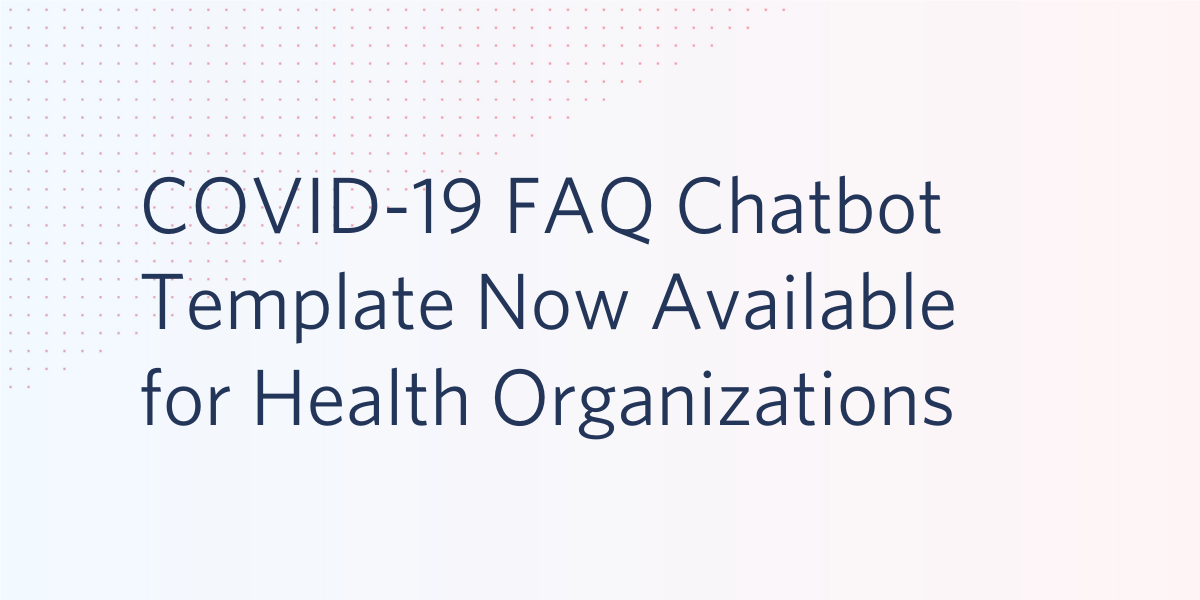
As the COVID-19 crisis continues to escalate, the #1 communications need we’ve identified in working with health organizations is reaching people with timely, accurate, and trusted health information. Public health hotlines and patient communication systems are now dealing with many more inquiries than normal. To address this demand, health organizations must automate as many responses to these inquiries as possible to free up human capacity to deal with more complex problems in the fight against this outbreak.
We’ve seen many health organizations look to text and voice-based chatbots to field common questions about COVID-19. To make adopting AI-powered chatbots faster and easier, Twilio has created a chatbot template based on the World Health Organization's COVID-19 FAQ. If you are a public health agency, hospital, or health-focused nonprofit and would like access to this COVID-19 chatbot template, please reach out to us here.
Disclaimer: This chatbot example is intended for the distribution of public health information only. It should not be used to collect Protected Health Information (PHI) in accordance with HIPAA. See Twilio and HIPAA for further information.
What is the Coronavirus FAQ Chatbot Template?
This Frequently Asked Questions chatbot template provides a starting point for health and government organizations to create chatbots that answer common questions that the public has about COVID-19. It’s based on information directly from the World Health Organization to ensure that the information it provides is accurate and relevant. You can send it questions like: What are the symptoms of COVID-19? or Should I wear a mask? The Twilio team has trained this chatbot to respond to over 25 common questions about COVID-19.
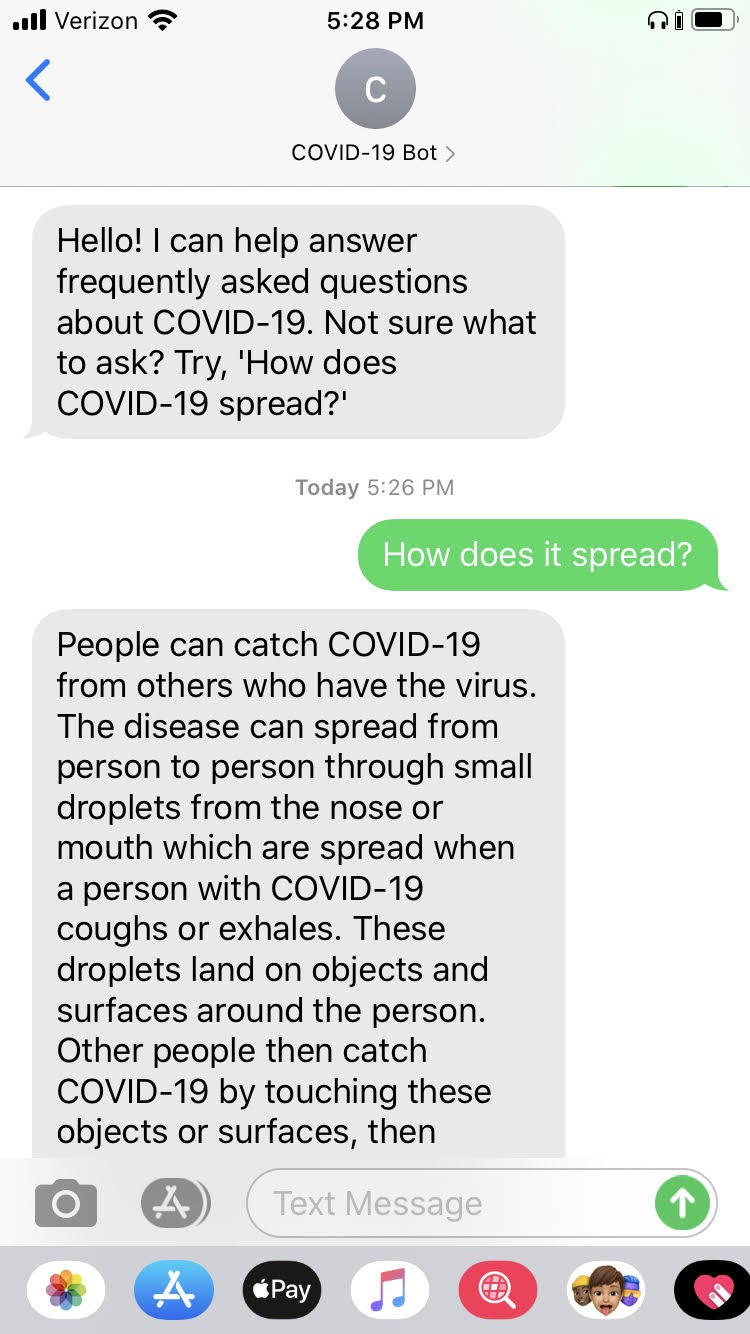
To try out the Coronavirus FAQ Chatbot, you can send a text message to +1 (415) 423-2996.
The chatbot is powered by Autopilot, Twilio’s Language Understanding platform. This allows people to ask questions in a variety of different ways and still get the right answer to their questions.
The same bot can be deployed on a variety of communication channels beyond SMS, including voice, Facebook Messenger, and webchat. The template allows you to choose the channel(s) that are most relevant to your audience based on the community that you are serving.
How the Coronavirus FAQ Chatbot works
The Coronavirus FAQ Chatbot is a template, meaning that it is meant to be an example starting point for your organization to build off of to deploy something quickly. We recognize that different organizations will have different needs and information to communicate based on how they are responding. But don’t worry, customization and configuration of the bot can be done entirely through the Twilio Console, with no coding required.
Build questions and answers
Once we vet your request for access to this template, we will send you instructions on how to import the bot into your Twilio account. This will sync the questions, answers, and training data from the template and populate the COVID-19FAQ bot on your list in the Twilio Console:
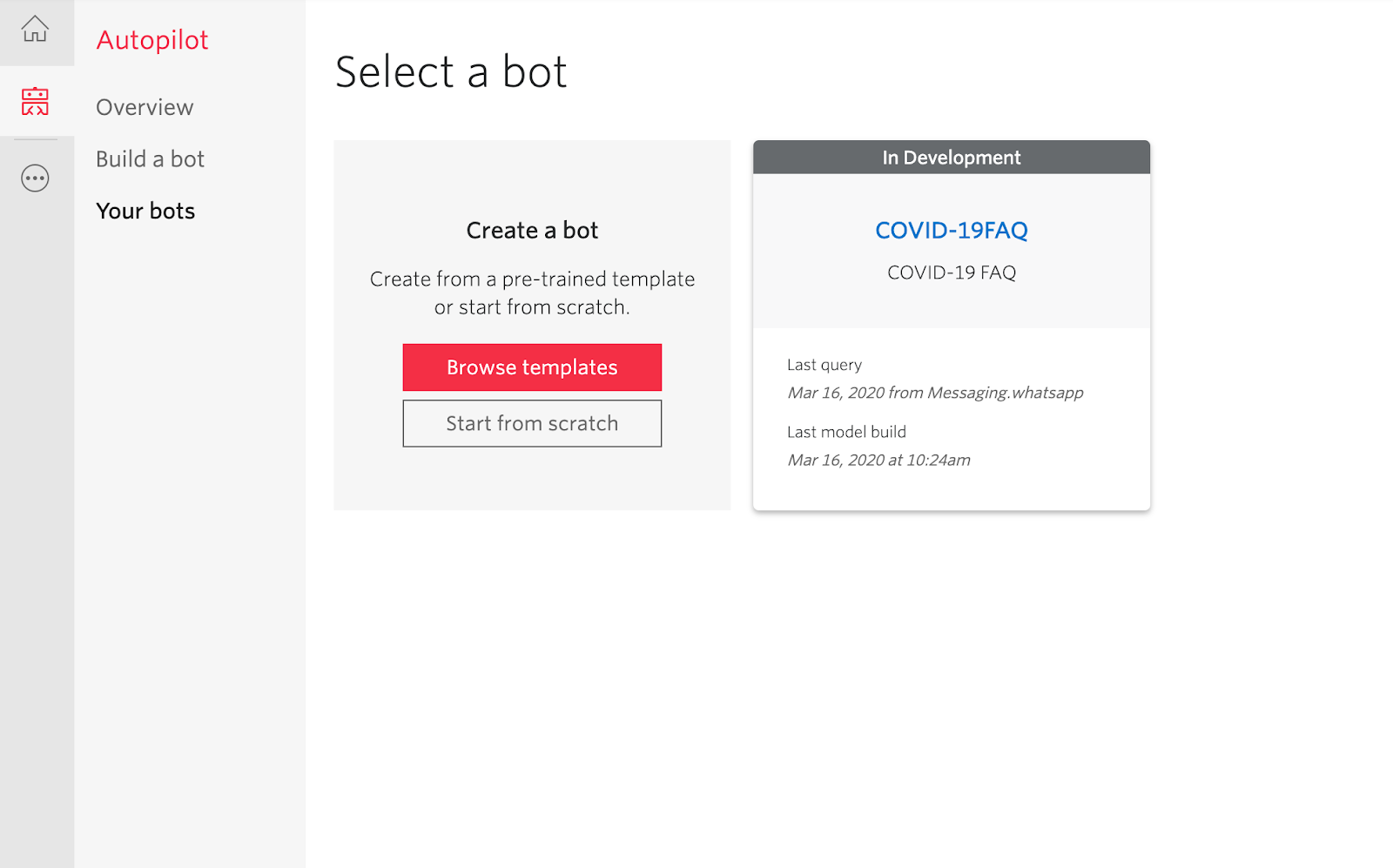
In Autopilot, three types of data define how our bot works that you can customize:
- Tasks are topics that our bot can discuss with a user.
- Samples are examples we provide our bot to teach it how to recognize what a user is asking about.
- Queries are questions that users ask our bot (and can be used to train the model).
All of these attributes of your bot can be updated in the Twilio Console via an easy to use UI. Below, you can see how you could add a new sample (or example question) of how a user might ask about the duration of the illness caused by coronavirus:
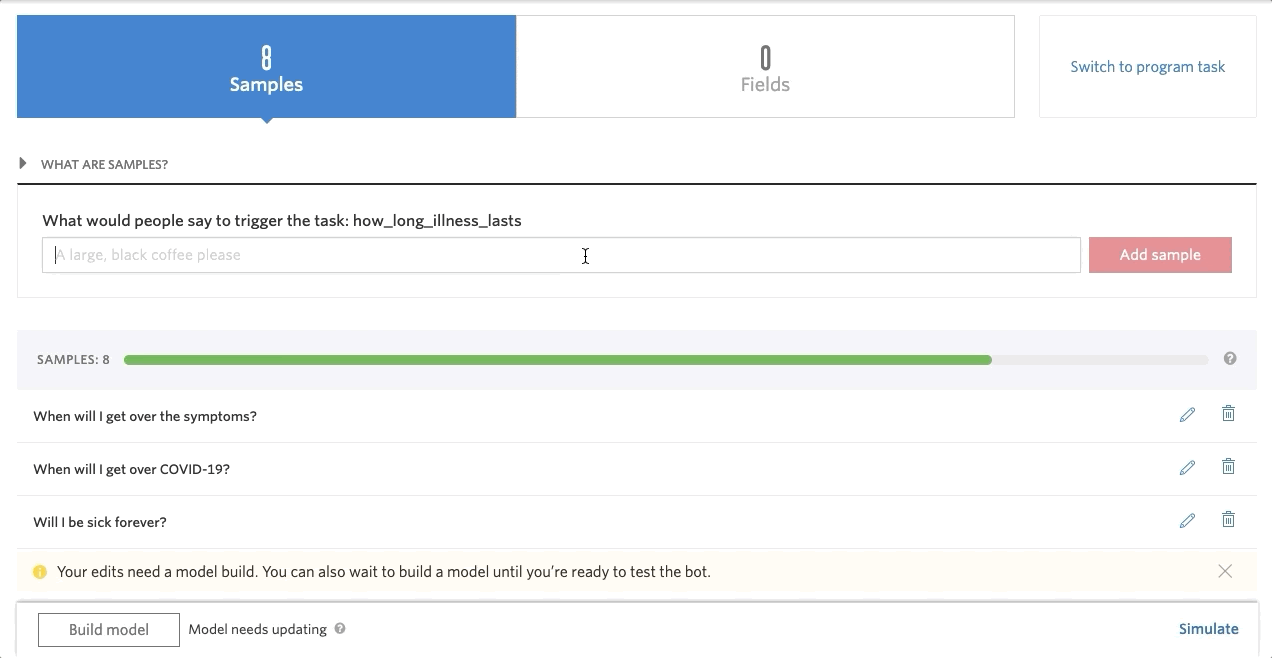
Train the model
Autopilot also has a full text simulator in the Twilio Console that can be used to train your bot. You can ask it questions just as a user would, see how the bot responds, then train it if it responds incorrectly:
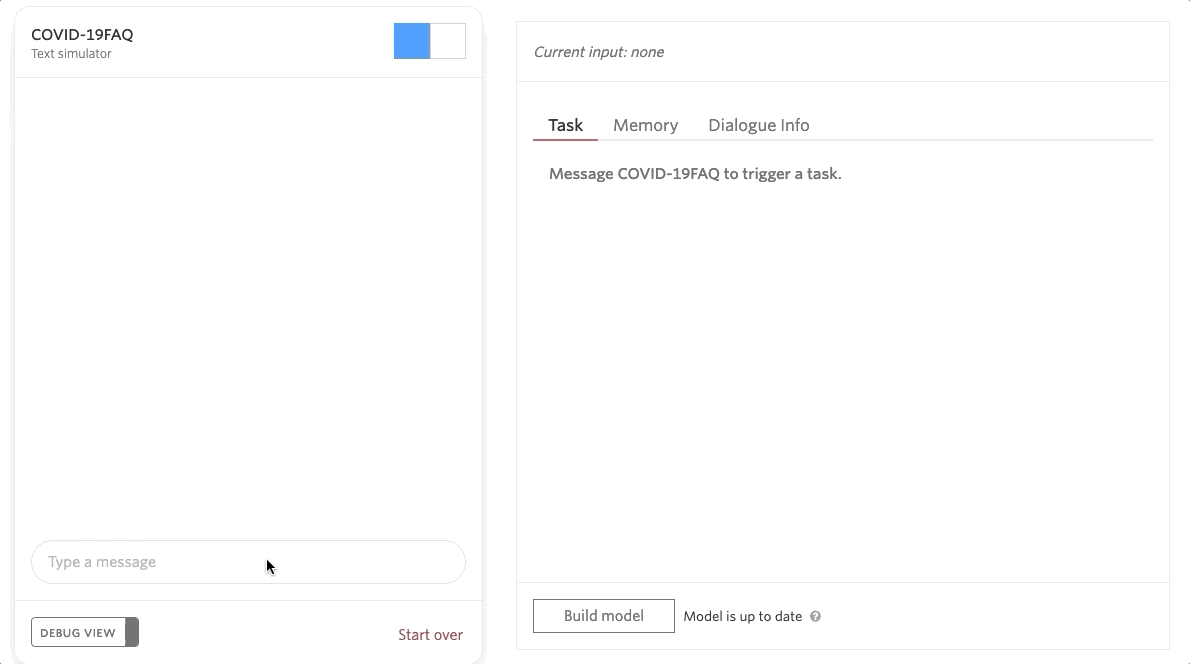
If you’re looking to expand this template with even more functionality, you could use the Autopilot Actions Overview to learn more about what’s possible.
Add relevant channels
Once you’ve tailored the bot’s questions and answers to your location, you can adapt the channels on which you can receive and send messages. Twilio’s Autopilot platform works across channels, so the same bot can easily take questions over the phone or a messaging channel like SMS or webchat.
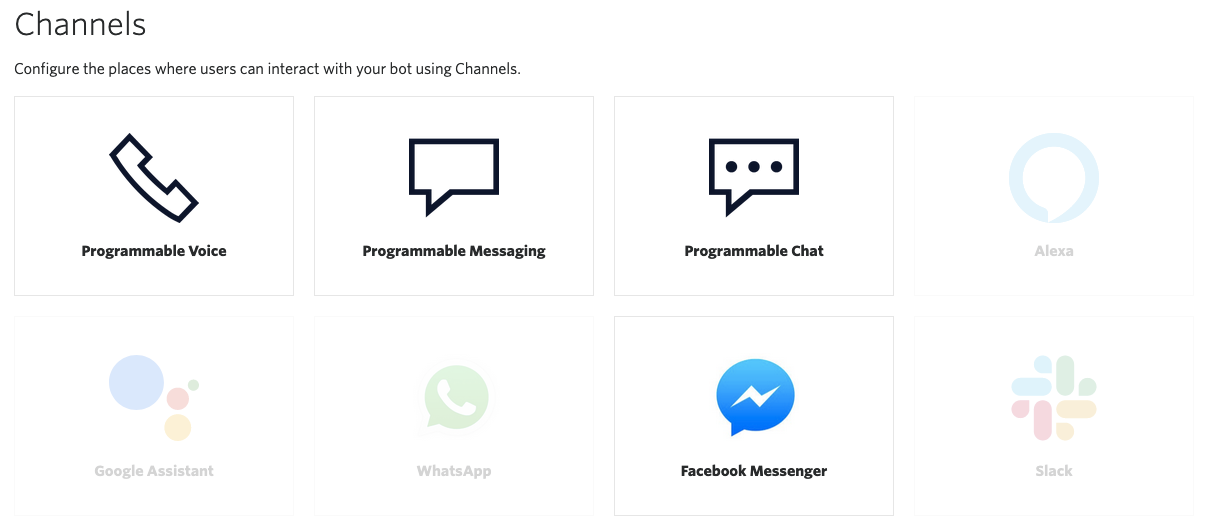
Hand off to a person
Sometimes our AI assistant simply won’t have the answer to a specific health question. What if the person needs to consult with a healthcare professional about their own symptoms, not just general information about COVID-19?
One option would be to hand-off to a video session built using Twilio’s HIPAA-Eligible Programmable Video. For more information about using Twilio for HIPAA-regulated workflows, see our “Twilio and HIPAA” website.
Using Autopilot and Studio – Twilio’s visual communication flow builder – you can send your caller or texter an SMS inviting them to a Programmable Video room for a consultation.
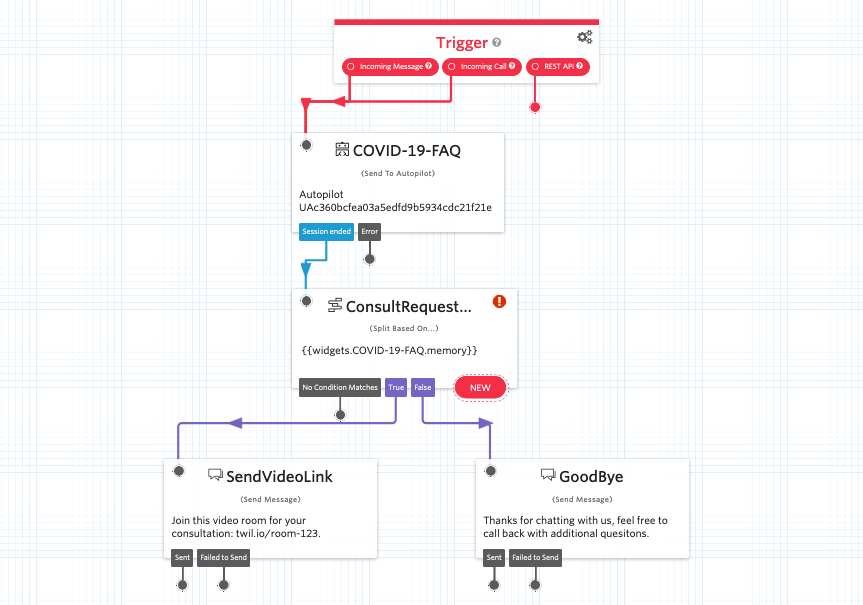
We’re here to help in the fight against COVID-19
If you are a public health agency, hospital, or health-focused nonprofit looking to spin up your own interactive FAQ about COVID-19 and would like access to this chatbot template, please reach out to us here.
Our hope is that this chatbot template will help health organizations accelerate the development and deployment of communications apps that help in the coronavirus response. The right message sent to the right people at the right time can help limit the spread of this virus and, ultimately, save lives. In the coming days and weeks, we will continue to identify patterns in what health organizations need to respond to this outbreak and surface resources that can help.
Related Posts
Related Resources
Twilio Docs
From APIs to SDKs to sample apps
API reference documentation, SDKs, helper libraries, quickstarts, and tutorials for your language and platform.
Resource Center
The latest ebooks, industry reports, and webinars
Learn from customer engagement experts to improve your own communication.
Ahoy
Twilio's developer community hub
Best practices, code samples, and inspiration to build communications and digital engagement experiences.


